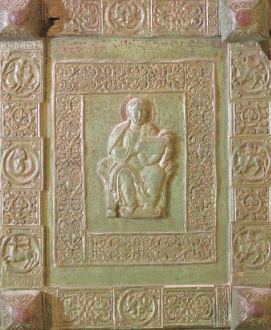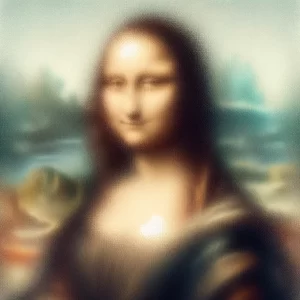
Secrets Behind the Bronze: How Medieval Doors Are Solving a 900-Year-Old Mystery
Picture it: a mysterious medieval craftsman named Barisanus, three towering bronze cathedral doors in southern Italy, and a scientific mystery hidden in the metal itself. No dragons—just centuries-old secrets revealed by high-resolution photography, chemistry, and a little-known sidekick called… metal shrinkage.
Yup. Shrinkage.
So how exactly did a bunch of medieval doors turn into the CSI of art history? Buckle up. We’re diving deep into the molten magic of the Middle Ages.
The Mystery of the Matching Doors
Barisanus of Trani—think of him as the Michaelangelo of medieval metal—crafted at least three jaw-dropping bronze doors that still hang today in the cathedrals of Trani, Ravello, and Monreale. But here’s the kicker: art historians couldn’t agree on when they were made or which came first.
That’s kind of important. Figuring out the order helps us understand how medieval workshops operated, what techniques evolved, and how artistic ideas spread across cities.
So scientists took a modern route: X-ray fluorescence guns, 3D photogrammetry, and yes, principal component analysis (PCA). Basically, the Avengers of historical research.
Medieval Doors, Meet Modern Science
Researchers created digital twins of each door—think laser-accurate video game versions. These 3D models let them measure tiny differences in the panels’ sizes, surface wear, and motifs. Then came the juicy stuff: chemical analysis.
By blasting each panel with a handheld X-ray device, the team could “read” the metal’s composition. And what they found was… unexpected.
- Trani: Mostly copper and tin, with some lead.
- Ravello: Heavier on the lead.
- Monreale: Surprise! A decent helping of antimony, a silvery element once used in cosmetics and alchemy.
Antimony in 12th-century cathedral doors? That’s rare—even for Europe. So where did it come from?
A Sicilian Side Quest
Enter: the mines of medieval Sicily. Historical records mention deposits of copper, antimony, and silver in the Peloritani Mountains, not far from Monreale. While it’s not 100% confirmed, the best guess is that Barisanus (or someone in his orbit) used locally mined antimony-rich copper for the Monreale door.
It’s kind of like discovering Da Vinci used regional chalk for the Mona Lisa. It ties the artwork not just to the artist—but to the land itself.
The Shrinkage Clue (Yes, Really)
Here’s where the plot thickens.
When you cast metal, it shrinks as it cools. That means if someone copied a panel to make a new mold, the next casting would be slightly smaller. Think Russian nesting dolls—each one just a bit tinier.
So by measuring nearly identical panels across the three doors—say, depictions of St. George or John the Baptist—researchers could reverse-engineer which came first.
The results?
- Trani’s panels were the largest. That makes them the originals.
- Ravello’s were next.
- Monreale’s were smallest, meaning they were likely third in line—or at least cast from second-generation models.
In short: shrinkage solved a 900-year-old mystery.
Wax Models and Traveling Molds
One of the coolest takeaways is how these doors were probably made. The panels weren’t cast on-site. Instead, wax models—used in a process called lost-wax casting—may have been crafted in one central workshop, then carefully transported to different cities.
That’s like designing a sculpture in New York, mailing it to Tokyo, and casting it there. In the 12th century.
If true, it shows just how sophisticated and mobile medieval artisans were—and how much trust (and funding) was placed in these architectural showpieces.
So What? Why It Matters
Besides the fact that this is objectively awesome (hello, portable wax libraries!), this research shows how science can literally rewrite history.
It challenges assumptions that art history has clung to for decades. It proves how even metal—silent, cold, and ancient—still has stories to tell. Stories about travel, trade, technology, and teamwork in an era we too often oversimplify.
And it invites us to look closer at what we think we know. That door you’ve walked past on vacation? It might be part of an unsolved riddle.
Let’s Explore Together 🔍
What’s the coolest science fact you’ve learned recently?
Would you want to touch one of these doors, knowing their chemistry tells a story?
If you could cast one thing in bronze to be found 900 years from now, what would it be?
Drop your thoughts in the comments or share this blog with your fellow history nerds. Let’s make medieval metal cool again.
Stay Updated or Risk Falling Behind
Science is evolving rapidly—and in today’s chaotic information landscape, falling behind means losing ground to misinformation. This Week in Science delivers the most essential discoveries, controversies, and breakthroughs directly to your inbox every week—for free.
Designed for educators and science-savvy citizens, it’s your shield against bad data and outdated thinking.
Act now—subscribe today and stay ahead of the curve.
🔗 Liked this blog? Share it! Your referrals help defend truth and spread scientific insight when it matters most.



